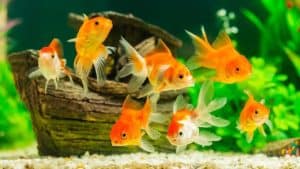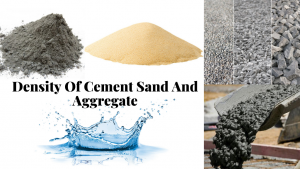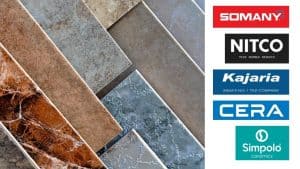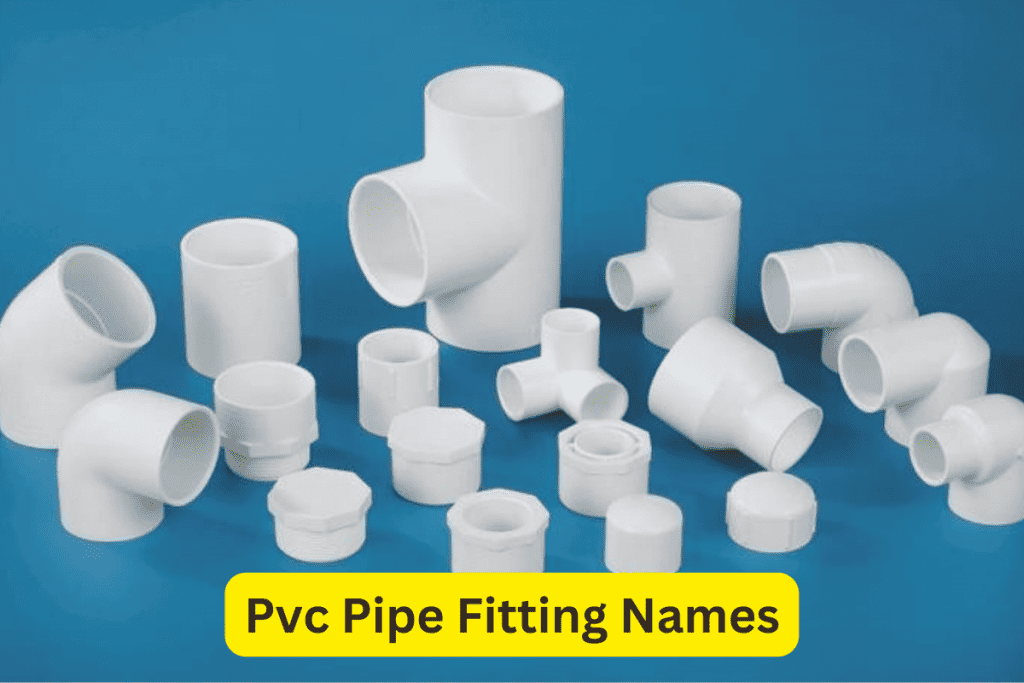
PVC (Polyvinyl Chloride) pipes and fittings are widely used in plumbing, drainage, and irrigation systems due to their durability, affordability, and ease of installation. Knowing the different PVC pipe fittings and their applications can help in choosing the right materials for your project. In this article, we will explore various PVC fittings with names, images, and their functions.
List of PVC Pipe Fittings with Names and Images
Here’s a detailed PVC pipe fittings name list along with images and descriptions, which will guide homeowners, builders, and contractors in selecting the right plumbing materials:
1. PVC Elbow Fitting
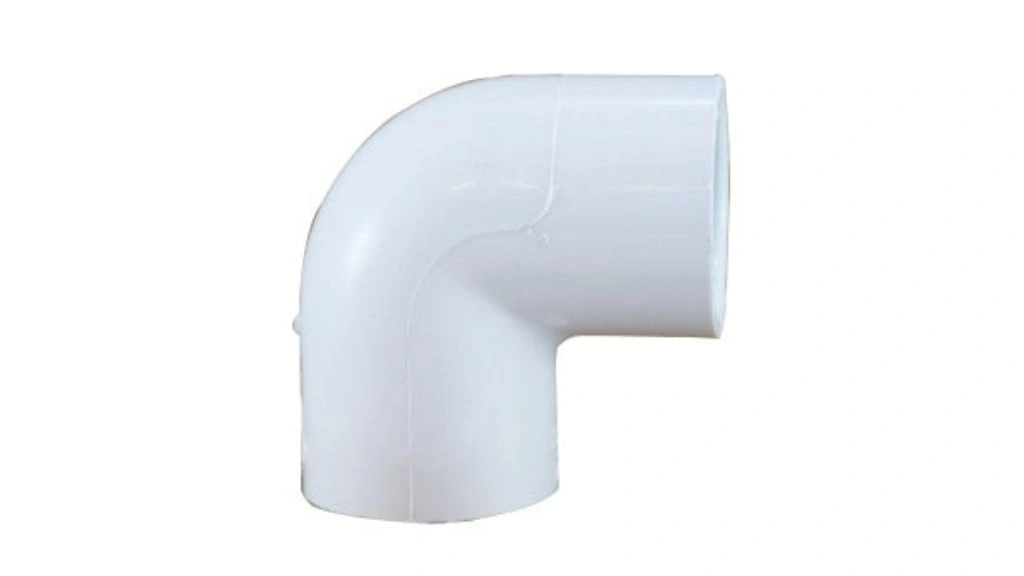
PVC Elbow fittings are pivotal components in the PVC pipe fitting material name list, used to change the direction of water flow, often at 45 or 90-degree angles. These fittings are essential in tight spaces like bathrooms, where plumbing systems need to navigate around corners, offering flexibility and efficient water flow management. By allowing pipes to bend smoothly around obstacles without the need for multiple straight sections, PVC elbow fittings contribute to sleek, modern home designs and efficient plumbing installations.
Common Uses: Connecting pipes at corners.
2. PVC Tee Fitting
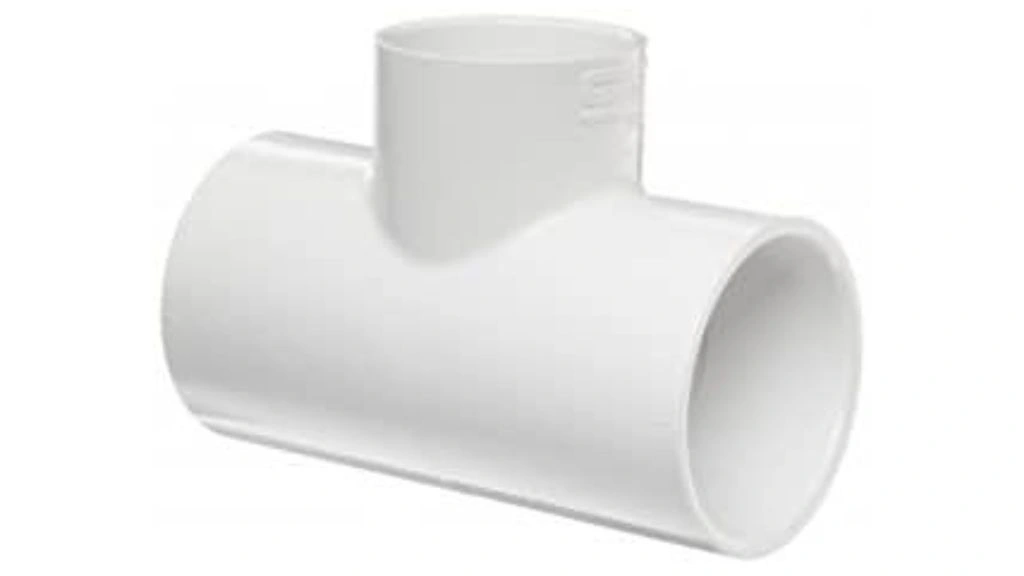
The “T” shape of PVC pipe fittings enables water to flow in two separate directions, making them ideal for distributing water to different areas of a home. In residential settings, this fitting connects a main water supply line to multiple branches, such as the kitchen and bathroom. Tee fittings are commonly used in irrigation and industrial systems, providing a streamlined solution for efficient water distribution across various outlets.
Common Uses: Creating branches in piping systems.
3. PVC Coupling
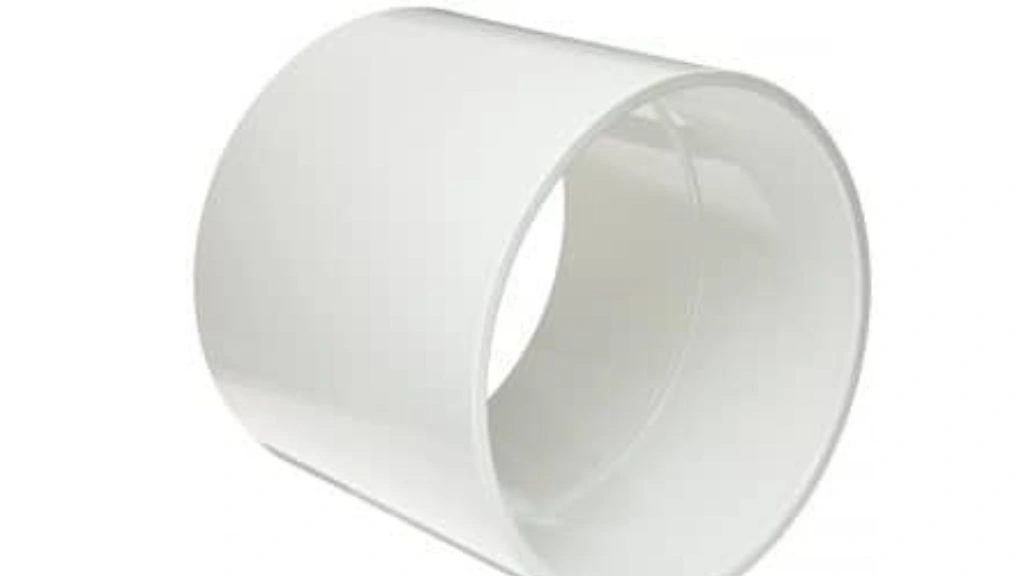
Couplings are an essential type of PVC pipe fittings, designed to connect two straight PVC pipes without changing their direction. They are commonly used when extending pipelines during home renovations or repairs, offering a seamless connection between pipe sections. Whether it’s for underground systems or internal plumbing within a property, couplings ensure a smooth and efficient link, making them a go-to solution in various applications.
Common Uses: Extending the length of pipe runs.
4. PVC Reducer
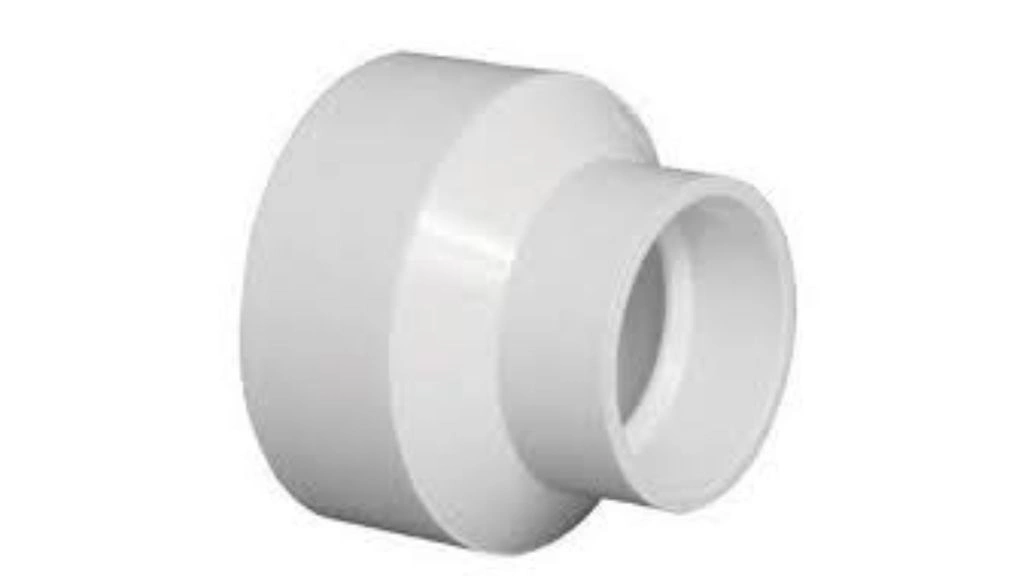
When plumbing systems involve pipes of varying diameters, a PVC joint known as a reducer ensures a snug fit between them. This fitting is essential for transitioning from larger to smaller pipes, helping to regulate water pressure effectively. It’s commonly used in home plumbing networks, such as in kitchen sinks or garden irrigation setups, allowing for a smooth flow of water between pipes of different sizes.
Common Uses: Connecting pipes with different diameters.
5. PVC Cross Fitting
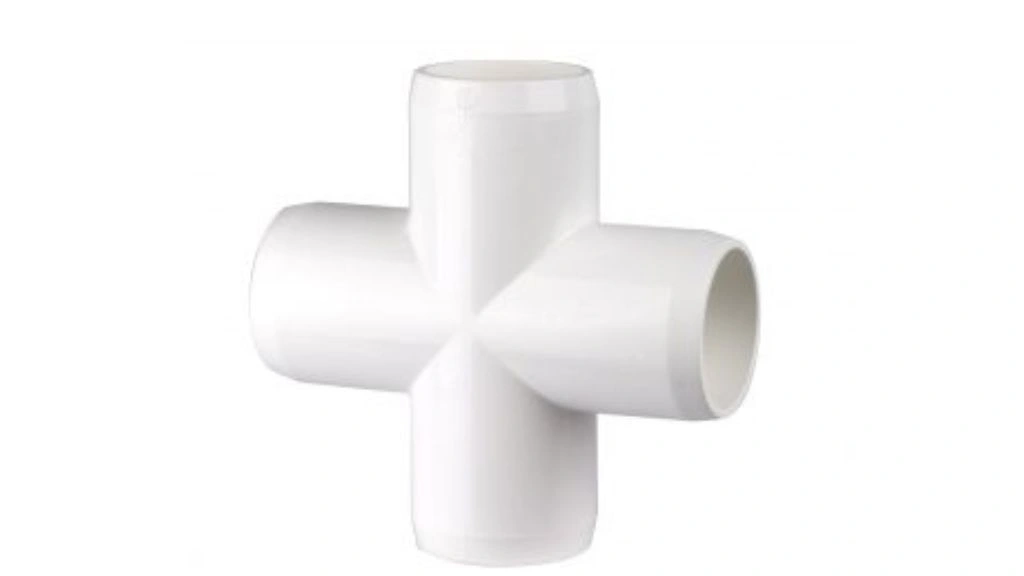
The cross-fitting is a versatile piece in the PVC items list, featuring four pipe connection points that allow water to branch off in multiple directions. This unique design is ideal for systems requiring several outflows, such as in irrigation fields or complex residential layouts where water is distributed to various rooms or outdoor areas of the property.
Common Uses: Plumbing systems that require distribution in multiple directions.
6. PVC Cap
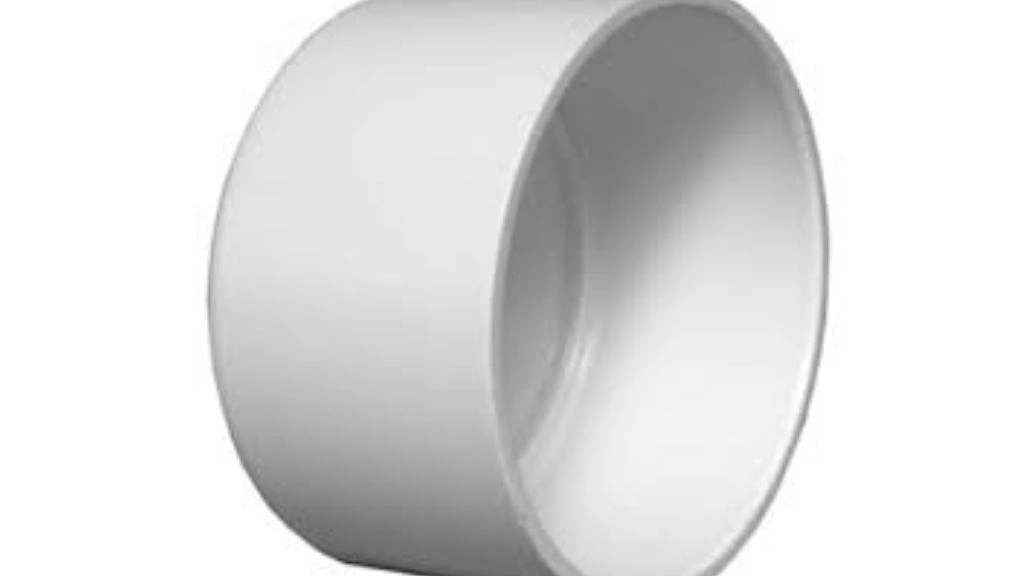
Used primarily to seal the ends of pipes, PVC caps are a common component in the types of PVC fittings. They are often utilized during home plumbing repairs or when pipe extensions are not yet needed. PVC caps prevent debris or pests from entering the system while maintaining water flow control. These fittings are simple yet essential for closing off unused pipe ends during renovation projects, offering a temporary or permanent seal.
Common Uses: Temporary or permanent pipe closure.
7. PVC Union
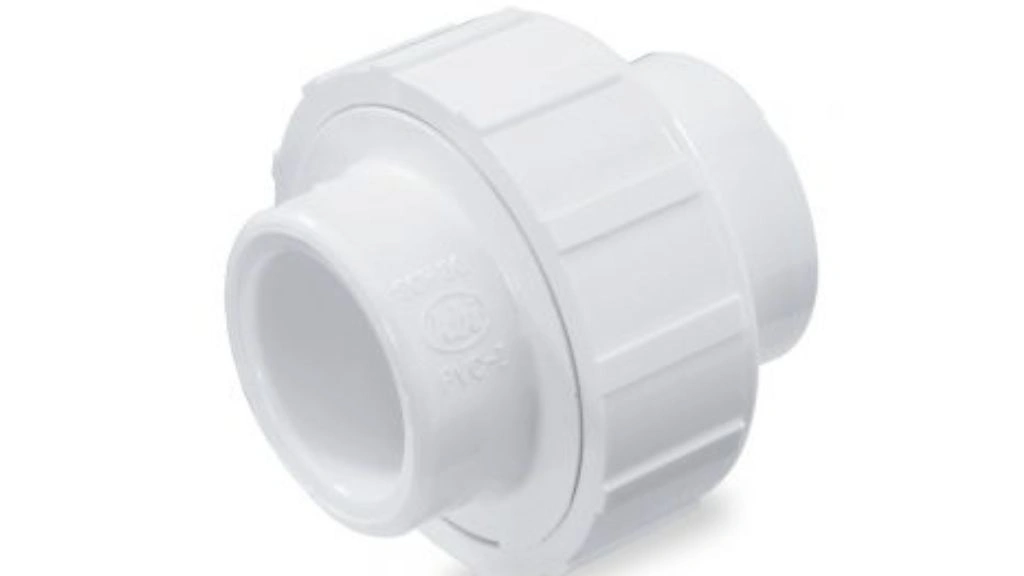
Unions are a vital component among the types of PVC fittings, designed for easy disconnection. Unlike permanent fittings, unions can be unscrewed and removed without causing damage to the plumbing system, making them ideal for repairs or maintenance. Whether used in residential or commercial projects, unions simplify isolating and servicing specific sections of the pipework without disrupting the entire system, offering both convenience and efficiency.
Common Uses: Easy pipe removal or system changes.
8. PVC Plug
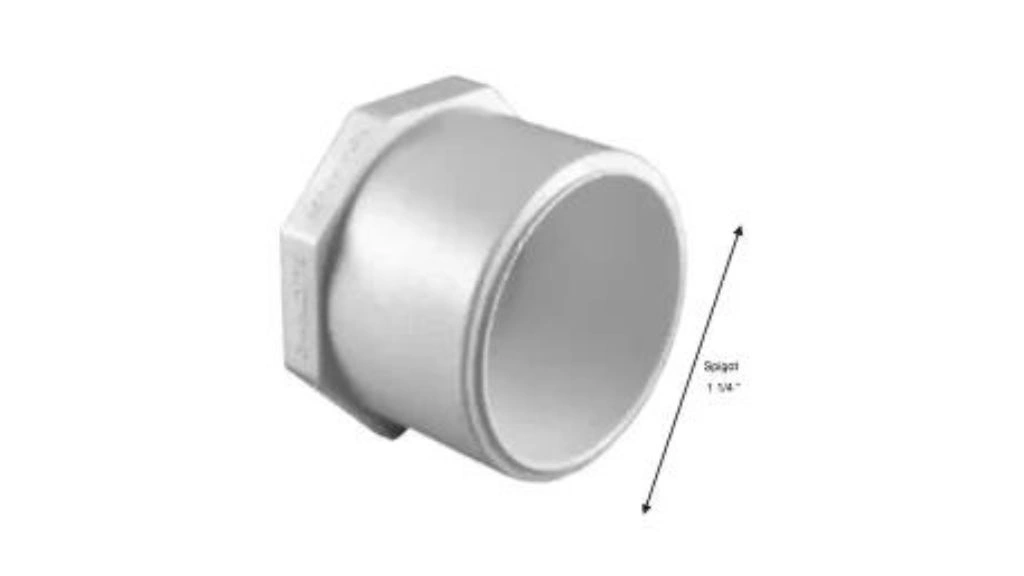
A PVC plug, much like other PVC joints, is used to seal off the ends of pipes, but instead of being slipped on, it is typically screwed in for a more secure fit. Commonly utilized in underground plumbing systems such as sewer lines or irrigation setups, these plugs ensure that the pipes remain tightly closed until further extensions or maintenance are needed, effectively protecting the system from external elements like dirt or debris.
Common Uses: Sealing pipe ends for maintenance or repair.
9. PVC Wye Fitting
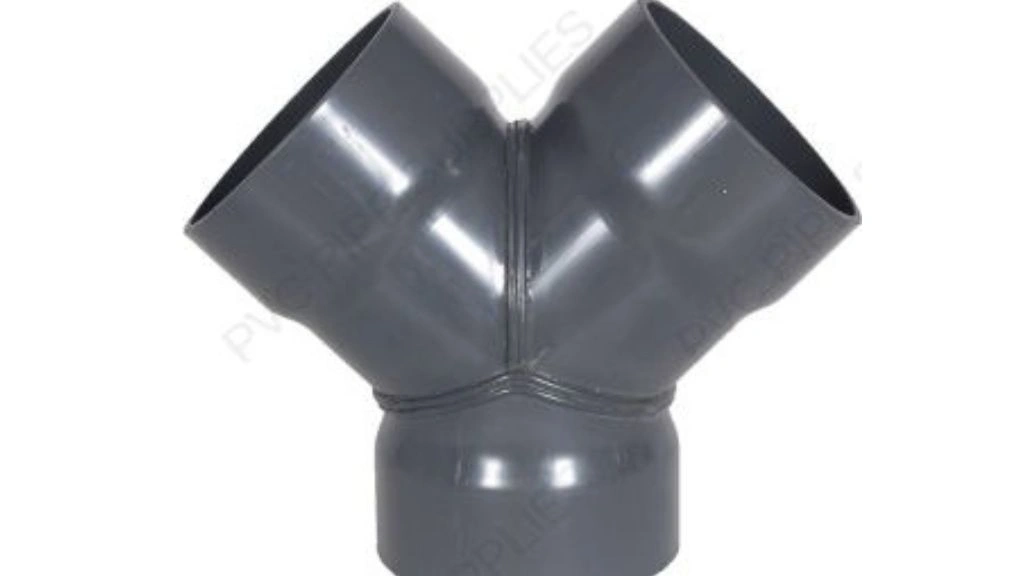
Shaped like a “Y,” this fitting, known as the Wye fitting, directs water at a 45-degree angle, making it ideal for drainage systems. It is commonly found in bathroom PVC pipe fittings to efficiently redirect wastewater from various branches into a main sewer line, ensuring proper water disposal without blockages. This design is essential in both residential and commercial buildings, facilitating smooth drainage while minimizing the risk of clogs in the plumbing system.
Common Uses: Connect pipes at a 45-degree angle for smooth directional flow.
10. PVC Flange
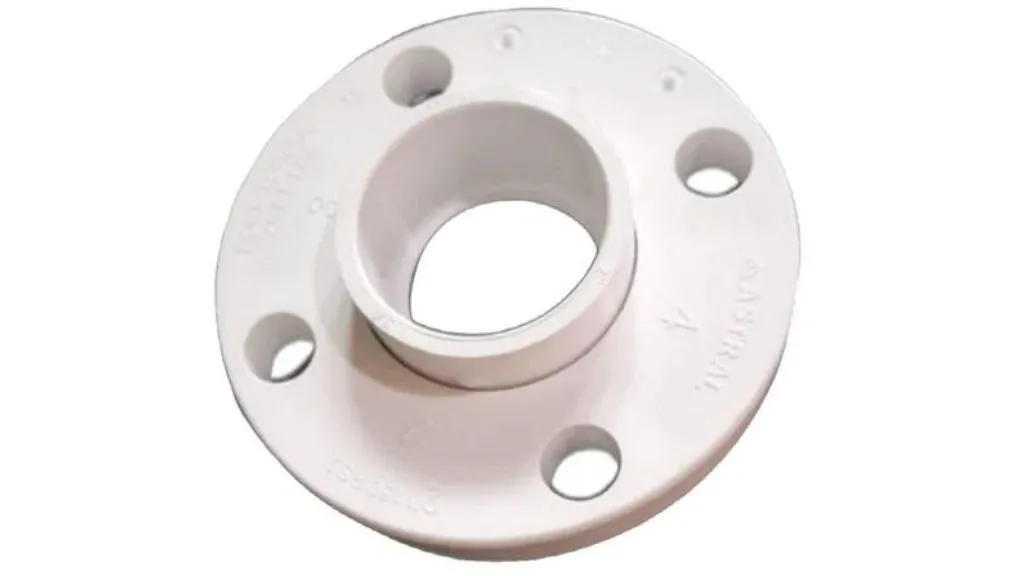
A PVC flange provides a stable and secure connection between pipes and fixtures, commonly found in toilets or drainage systems. As an essential component in PVC plumbing items, it creates a watertight seal, preventing leaks and ensuring the secure attachment of piping to other plumbing materials, such as bathroom fittings or heavy-duty drains. This fitting is crucial for maintaining the integrity of plumbing systems, particularly in high-use areas like bathrooms, where reliable connections are necessary to avoid costly repairs.
Common Uses: Easy access for assembly, disassembly, and maintenance in plumbing systems.
11. PVC Bushing
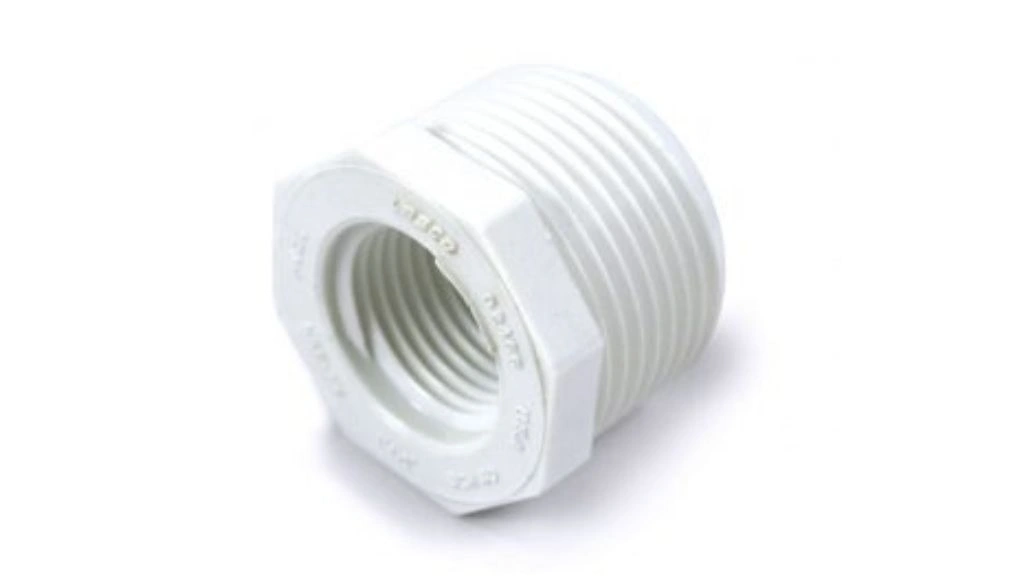
PVC bushings are essential PVC fittings that help reduce pipe sizes for specialized connections, making it easier to link larger pipes to smaller ones. These fittings are commonly seen in industrial settings or during property construction, where varying pipe diameters are necessary to control water flow across different building sections. Their adaptability and functionality make them a crucial part of the PVC fittings names list, ensuring efficient water management in various applications.
Common Uses: Reducing the pipe size while maintaining a secure, leak-proof connection.
12. PVC Trap
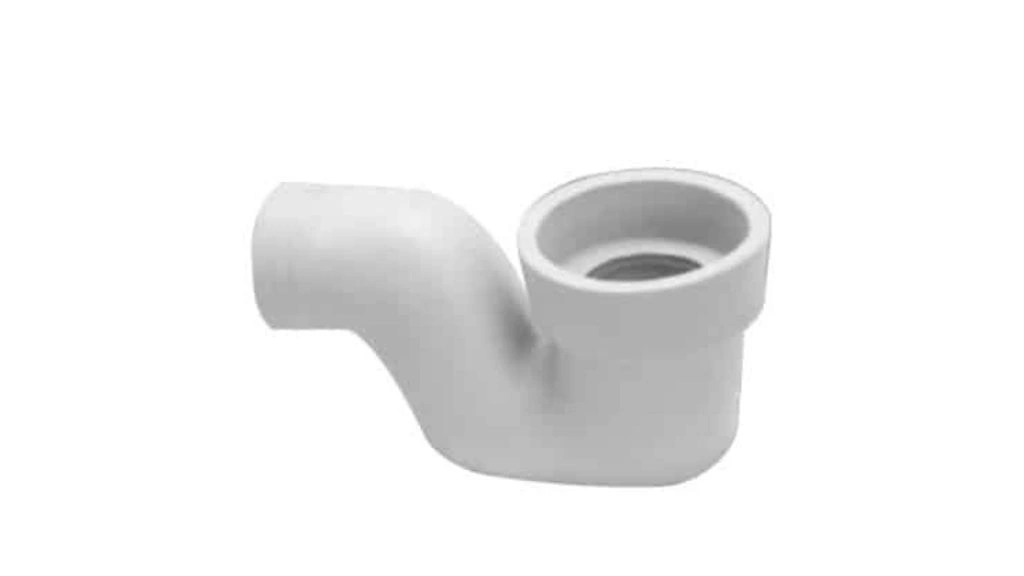
Installed beneath sinks or basins, PVC traps are vital PVC pipe fittings that prevent harmful sewer gases from entering the home while trapping debris that could otherwise clog the plumbing system. These fittings play a critical role in household maintenance, offering both health benefits and plumbing protection. Their importance in ensuring a safe and efficient plumbing system makes them essential items in the list of PVC pipe fittings names, particularly in modern homes.
Common Uses: Prevent sewer gases from entering buildings by trapping water in the bend of the pipe.
13. PVC Saddle Tee
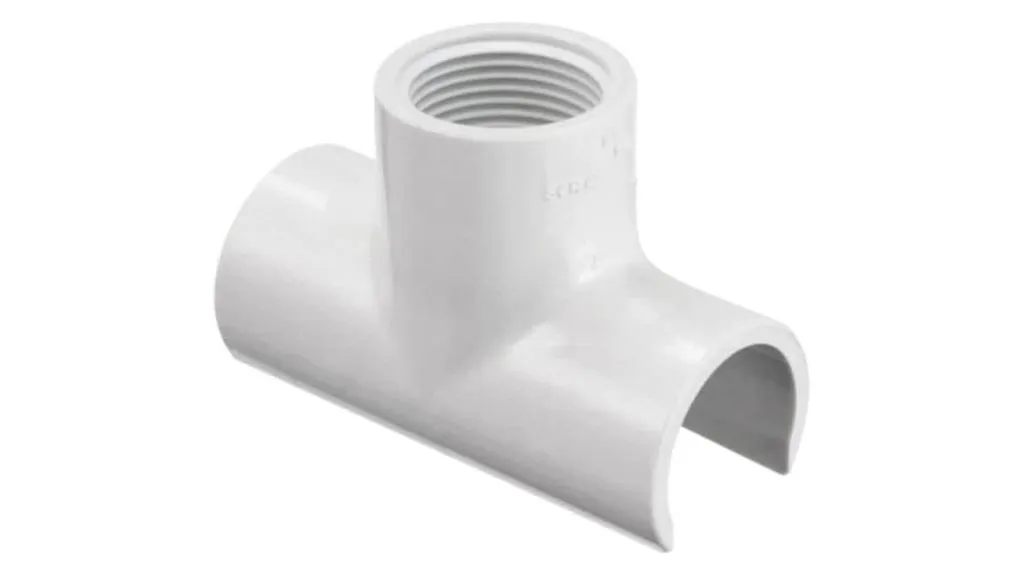
The saddle tee fitting is a versatile type of PVC pipe fitting designed to add a branch line to an existing pipe without the need for complicated cutting or restructuring. It’s frequently used in irrigation systems or when installing new plumbing lines to a home’s main water supply, making it an essential choice for various home and garden projects. This fitting allows for easy connections while maintaining the integrity of the existing plumbing system.
Common Uses: Adding connections without cutting into the pipe.
PVC Pipe Fitting Material Names
- PVC (Polyvinyl Chloride): Lightweight, durable plastic used for most residential plumbing.
- uPVC (Unplasticized PVC): A more rigid version of PVC, commonly used for water supply systems.
- CPVC (Chlorinated Polyvinyl Chloride): A higher temperature-resistant variant, often used in hot water applications.
Types of PVC Plumbing Fittings
- Pressure Fittings
Designed for high-pressure water systems, pressure fittings are essential in residential plumbing for hot and cold water lines. Made from durable PVC materials, they withstand high pressure without leaking. Homeowners should select fittings that match the pressure rating of their pipes to prevent leaks and water damage. - Non-Pressure Fittings
Used primarily in drainage, irrigation, and vent systems, non-pressure fittings are perfect for sewer lines and rainwater drainage. In homes, they connect drainpipes from sinks and toilets to the main sewer line. Proper installation is crucial to prevent blockages and ensure effective drainage in both residential and garden irrigation systems. - Furniture Grade Fittings
These fittings are designed for constructing PVC furniture like chairs and tables. Unlike standard fittings, furniture grade fittings have a clean appearance without markings, making them ideal for DIY projects. When building custom furniture, using furniture grade fittings adds style while ensuring stability and durability.
Tips for Homebuilders and Renovators
- Check specifications and pressure ratings of fittings to match your plumbing needs.
- Choose fittings appropriate for their specific applications to enhance longevity.
- For DIY furniture, opt for furniture grade fittings to maintain aesthetics.
- Use the right adhesives and sealants during installation to prevent leaks.
The Key Benefits & Versatile Applications of PVC Pipe Fittings
Learn about the unique advantages of PVC pipe fittings, from durability to cost-efficiency, and how they are widely used in both residential and commercial plumbing applications.
Durability
PVC pipe fittings are renowned for their resistance to corrosion, weathering, and chemicals, making them a durable choice for modern construction projects. Whether you’re working on a residential property or a large-scale industrial development, the longevity of PVC fittings ensures that your plumbing systems will perform reliably over time. Unlike other materials, PVC fittings maintain their integrity in various conditions, providing long-term support in irrigation, drainage, and household plumbing systems.
Cost-Effectiveness
PVC pipe fittings offer a budget-friendly solution without sacrificing quality. They are significantly more affordable than their metal counterparts, reducing costs in home renovation and construction projects. Since PVC fittings are widely used in both commercial and residential plumbing, they can be purchased in bulk without breaking the bank. Builders and homeowners alike can benefit from the reduced overall plumbing expenses, especially in large-scale projects where every fitting counts.
Easy Installation
One of the key advantages of PVC fittings is their ease of installation. They are lightweight and easy to handle, making them a favorite among DIY enthusiasts and professional contractors. With no need for welding or specialized tools, PVC pipe fittings can be quickly assembled, saving both time and labor. Their straightforward installation is a major advantage in modern homes, where quick plumbing adjustments are often necessary, particularly during renovations or when installing new systems like a PVC pipe elbow for redirection.
Corrosion Resistance
Unlike metal pipes, PVC pipe fittings are immune to rust and corrosion. This makes them particularly suitable for applications involving water, chemicals, or moisture-rich environments. In residential homes, PVC plumbing items can be used both indoors and outdoors without the risk of deteriorating over time. Their resistance to harsh conditions ensures that the property’s plumbing system remains intact, providing a longer-lasting infrastructure that doesn’t require frequent maintenance or replacement.
Versatility
The versatility of PVC pipe fittings makes them a go-to material for various sectors, including plumbing, industrial manufacturing, and irrigation systems. Their adaptability means they can be used in multiple types of pipe configurations, ensuring an efficient water distribution system throughout a property. Whether you’re managing a home renovation or overseeing a construction site, pvc joints and different types of PVC plumbing fittings provide the necessary flexibility to meet diverse project requirements, including drainage systems and underground plumbing.
These advantages make PVC pipe fittings indispensable in modern construction, particularly for those managing properties, developers working on large estates, or homeowners looking to upgrade their plumbing systems. The combination of cost-efficiency, durability, and ease of use ensures that PVC fittings remain a top choice across industries.
PVC Pipe Fittings vs. Other Materials: A Comprehensive Comparison
Explore how PVC pipe fittings measure up against other materials like metal, copper, and PEX, and discover why PVC is often the preferred choice in modern construction and plumbing projects.
1. PVC vs. Metal
| Feature | PVC Pipe Fittings | Metal Pipe Fittings |
| Durability | Resistant to rust and corrosion, ideal for long-term use | Prone to rust and corrosion, especially in high-moisture environments |
| Weight | Lightweight, easy to handle and install | Heavier, requires more effort and support during installation |
| Installation | Simple and quick installation with solvent cement or threads | More complex installation, often requiring welding or threading |
| Cost | Generally lower cost, affordable for most household projects | More expensive due to material and installation complexity |
| Corrosion Resistance | Highly resistant to chemical and moisture-induced corrosion | Susceptible to corrosion over time, especially in damp conditions |
| Temperature Tolerance | Limited tolerance for high temperatures | Can withstand high temperatures, ideal for industrial or hot liquid systems |
| Use in Plumbing | Commonly used in household and light commercial plumbing systems | Suitable for industrial and high-pressure applications |
| Maintenance | Low maintenance due to resistance to chemical damage | Requires more maintenance to prevent rust and leaks over time |
2. PVC vs. Copper
| Aspect | PVC | Copper |
| Temperature Handling | Suitable for cold and warm water, but not ideal for high-temperature systems | Excellent for hot water systems, handles higher temperatures effectively |
| Corrosion Resistance | Resistant to most forms of corrosion and chemical reactions | Resists corrosion but can suffer from pitting in certain water conditions |
| Cost | Low-cost material, budget-friendly for residential plumbing | Much costlier than PVC, higher upfront material expense |
| Installation | Easy to install, requires basic tools and PVC cement | Requires specialized tools and professional expertise, increasing labor costs |
| Durability | Long-lasting but can become brittle over time or when exposed to sunlight | Durable and has a long lifespan but may corrode or leak over time |
| Flexibility | Less flexible, more prone to cracking under pressure or in extreme cold | More flexible and resistant to cracking, especially in colder climates |
| Weight | Lightweight, easy to transport and handle | Heavier, making it more difficult to work with and install |
| Versatility | Widely used for drainage, waste, vent, and residential water systems | Best suited for hot water systems and applications requiring temperature resistance |
| Environmental Impact | PVC production can release harmful chemicals, though it is recyclable | Copper is a natural material and fully recyclable, but mining has environmental impacts |
| Applications | Commonly used for residential, bathroom, and irrigation plumbing | Often used in commercial and high-temperature residential plumbing |
3. PVC vs PEX
| Feature | PVC (Polyvinyl Chloride) | PEX (Cross-linked Polyethylene) |
| Flexibility | Rigid, requires fittings to bend | Highly flexible, easy to install with fewer fittings |
| Ease of Installation | More difficult to install due to its rigidity | Easier to install due to flexibility |
| Cost | Generally more affordable | More expensive compared to PVC |
| Outdoor Use | Highly durable, resistant to UV light and weathering | Not suitable for outdoor use; sunlight degrades the material |
| Durability | Long-lasting, suitable for both indoor and outdoor use | Durable indoors, but susceptible to UV damage outdoors |
| Applications | Widely used in plumbing, drainage, and industrial systems | Primarily used for indoor plumbing in modern homes |
| Fittings | Requires various fittings like elbows, tees, and couplings | Fewer fittings required due to pipe flexibility |
| Temperature Resistance | Handles cold water and moderate temperatures, not ideal for hot water | Can handle both hot and cold water with high temperature resistance |
| Material Composition | Made from rigid plastic | Made from flexible, cross-linked polyethylene |
| Lifespan | Extremely durable, lasting decades when properly installed | Long-lasting but may degrade if exposed to sunlight |
This comparison highlights how PVC items stand out for their cost-efficiency and ease of use, making them a top choice for most plumbing and property projects.
Conclusion
Understanding the various types of PVC pipe fittings is essential for anyone involved in property construction, plumbing, or renovation. PVC joints and fittings ensure seamless connections in piping systems, offering both durability and versatility. From PVC elbows to PVC tees, each fitting plays a unique role in directing flow or joining different pipe sections. The types of PVC plumbing fittings available cater to a wide range of needs, whether for drainage systems, irrigation, or residential plumbing. Their cost-effectiveness and ease of installation make PVC a go-to choice for contractors and developers alike.
By choosing the right types of PVC fittings, you enhance both the efficiency and longevity of your project. Properly installed PVC joints ensure that pipes remain secure and resistant to leaks, making them a preferred solution in modern homes. For developers, selecting PVC over other materials helps cut costs and simplifies installation without compromising on quality. Whether you’re dealing with types of PVC plumbing fittings for home renovations or large-scale property developments, understanding their applications ensures smooth, reliable performance throughout your project.

